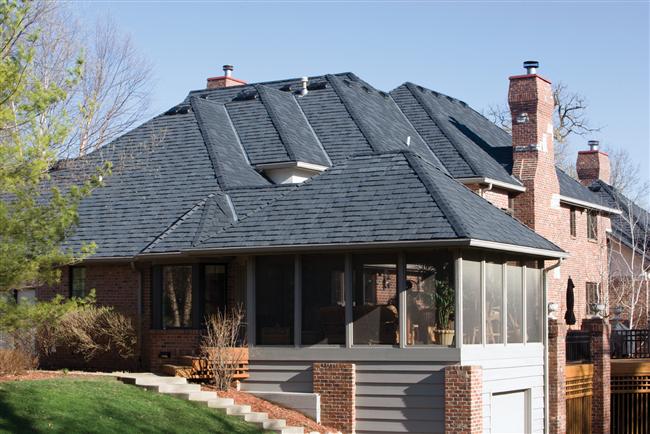Did you know that up to 25% of your home’s energy loss can occur through the roof? If your energy bills have been creeping higher, it might be your roof that’s letting your money fly out the window—literally. An old or damaged roof can cause inefficient heating and cooling, making your HVAC system work overtime. The good news? Replacing your roof can significantly boost your home’s energy efficiency.
Whether you’re aiming to cut costs, reduce your carbon footprint, or just create a more comfortable living space, a new roof is one of the best investments you can make. Let’s dive into how upgrading your roof can make your home more energy-efficient and save you money in the long run.
1. Improved Insulation with Modern Roofing Materials
The materials used in modern roofing are far more energy-efficient than those available even 10 or 15 years ago. New shingles, for example, are designed to provide better insulation, helping to keep your home warm in the winter and cool in the summer.
Older roofs often lack proper insulation, allowing conditioned air to escape and outside air to seep in. This forces your heating and cooling systems to work harder, increasing your energy consumption. With a new roof, you can take advantage of the latest insulation technologies to seal your home more effectively, reducing energy waste.
2. Reflective Roofing to Combat Solar Heat
In the warmer months, your roof is constantly absorbing the sun’s rays, and without the right materials, your home can turn into an oven. Reflective roofing, such as cool roofs or Energy Star-rated shingles, helps combat this issue by reflecting more sunlight away from your home. This reduces the amount of heat your roof absorbs, keeping your home cooler and easing the load on your air conditioning system.
By installing a reflective roof, you can lower your cooling costs by as much as 15%. That’s a significant saving, especially during the peak of summer!
3. Enhanced Ventilation Reduces Energy Costs
Good ventilation is key to an energy-efficient home. Without it, hot air gets trapped in your attic, causing your HVAC system to work harder to keep your home cool in the summer. Poor ventilation can also lead to moisture buildup in the winter, which can cause long-term damage to your roof and attic.
When you replace your roof, you can install advanced ventilation systems that allow air to circulate more freely. Proper ventilation reduces heat buildup in the summer and moisture accumulation in the winter, improving overall energy efficiency and extending the life of your roof.
4. Eliminate Drafts and Air Leaks
Over time, roofs can develop gaps, cracks, and holes that allow air to leak in and out of your home. These leaks are not only uncomfortable, but they also force your heating and cooling systems to work overtime, driving up your energy bills.
A roof replacement eliminates these air leaks by creating a tight seal over your home. This not only keeps your home more comfortable but also significantly reduces energy waste. The result? Lower energy bills and a more environmentally friendly home.
5. Energy-Efficient Underlayment for Extra Protection
When replacing your roof, it’s not just the shingles that matter—what’s underneath is just as important. Modern roofing underlayment offers an additional layer of energy efficiency by providing extra insulation and protection against the elements. This underlayment helps prevent heat transfer, reducing the amount of energy needed to keep your home at a comfortable temperature.
By choosing energy-efficient underlayment materials, you add an extra barrier against energy loss, ensuring your home stays more energy-efficient year-round.
6. Prevent Mold and Moisture Damage
Energy efficiency isn’t just about insulation—it’s also about protecting your home from the elements. An old or damaged roof can allow moisture to seep in, leading to mold growth and structural damage. Mold not only affects your health but also weakens your home’s insulation, making it harder to maintain a consistent temperature.
A new roof, installed with proper moisture barriers and ventilation, prevents this type of damage. By keeping moisture out, you can maintain the integrity of your home’s insulation and improve energy efficiency.
7. Boost Home Value with Energy Savings
In addition to saving you money on energy bills, a new energy-efficient roof can also boost your home’s value. Homebuyers are increasingly looking for energy-efficient features, and a new roof with advanced materials and proper insulation can be a major selling point.
By replacing your roof, you’re not only cutting down on energy costs but also making your home more attractive to potential buyers. It’s an investment that pays off both immediately and in the long run.
Time to Make the Upgrade—Contact Us Today!
Replacing your roof isn’t just about aesthetics or keeping your home safe—it’s also about saving money and making your home more energy-efficient. With modern materials, better insulation, and improved ventilation, a new roof can dramatically lower your energy bills while keeping your home comfortable year-round.
Ready to start saving? Call us at 301-329-8295 or visit our contact page to get a free quote today. Let’s make your home more energy-efficient with a roof that’s built to last!

